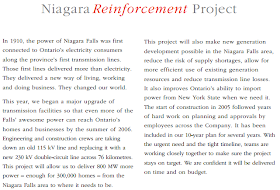Breaking a long-standing rule, this is the first guest post published on my Cold Air blog
Bruce Sharp has "worked in the Ontario energy industry for twenty-seven years and have a background in power generation, energy management, industrial natural gas utilization, energy marketing and energy consulting."
I have nothing against energy retailers, but I think Sharp's work makes a compelling case they are inappropriate in today's residential electricity sector in Ontario.
_____
Introduction
The Ontario Energy Board has invited comments on the Effectivenss of Part II of the Energy Consumer Protection Act (ECPA). The problem is that optimizing this section of the Act is like perfecting a life jacket made of cement – the process may make sense in a very narrow quality sense but the product is ultimately very bad for the consumer. The prime question is “Why do we have at all an electricity retailing market for Ontario’s smaller consumers ?”
Summary
- The Ontario retail electricity market suffers from an asymmetry of information and so is dominated by unsavoury sellers and gullible buyers.
- The Global Adjustment or GA – paid for by customers on regulated rates and those on retail contracts – already provides protection against varying spot prices.
- Ontario retail electricity contracts duplicate what is already being done by the GA, causing consumers to effectively speculate on the spot market price of electricity. These contracts are therefore very unnecessary.
- The extreme profit margins embedded in retail electricity contracts virtually guarantee a homeowner will incur an added cost. This cost can be $ 200 or more per year.
- If we must improve the cement life jacket, side-by-side bill comparisons should be proactively audited and verification scripts should be modified such that the retailer clearly identifies for the customer the option costs, the higher cost option and magnitude of the differential.

